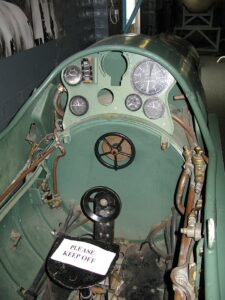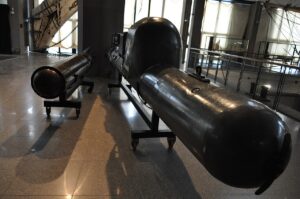 I am always amazed at some of the “latest and greatest” kinds of weapons that men have come up with to wreak havoc on their enemies. Of course, in a war, it is kill or be killed, so when you go into battle, you need the best weapons available. Still, some weapons are so strange that it is hard to imagine how they can work and how anyone would be willing to use them. Nevertheless, they do. On March 25, 1941, Italy attacked the British Fleet at Souda Bay, Crete. The strange part about this warhead (a torpedo) was that this was a “manned” torpedo. You might ask yourself how that could possibly be and how it could possibly work. We know what torpedoes are, but how can they possibly be manned? Nevertheless, they were.
I am always amazed at some of the “latest and greatest” kinds of weapons that men have come up with to wreak havoc on their enemies. Of course, in a war, it is kill or be killed, so when you go into battle, you need the best weapons available. Still, some weapons are so strange that it is hard to imagine how they can work and how anyone would be willing to use them. Nevertheless, they do. On March 25, 1941, Italy attacked the British Fleet at Souda Bay, Crete. The strange part about this warhead (a torpedo) was that this was a “manned” torpedo. You might ask yourself how that could possibly be and how it could possibly work. We know what torpedoes are, but how can they possibly be manned? Nevertheless, they were.
The attack of March 25, 1941, was the first time that manned torpedoes had been employed in naval warfare, and while it was strange, it added a new weapon to the world’s navies’ arsenals. Known as the “Chariot,” the weapon was definitely unique. It was mainly used to attack enemy ships that were still in the harbors. That makes sense, because the type of preparation necessary to run it would not be feasible in most settings. The Chariots needed “pilots” to “drive” them to their targets. Now, imagine having that be your job. We all know  what torpedoes do, they are deployed and run straight to their target and explode on contact. So, what does a “manned” torpedo do? The same thing!! Technically, however, this is not a suicide mission for the pilot. The way it works is this. The pilot sits astride the torpedo on a vehicle that would transport them both to their target. The pilot would guide the missile as close to the target as possible, then he detached the vehicle and rode it back, usually to a submarine. The only major problem my mind can envision would be if the vehicle wouldn’t detach. The Chariot was an enormous tactical advantage, because before its development, the closest weapon to the Chariot was the Japanese Kaiten, which was a human torpedo, or suicide bomb, which had obvious drawbacks. Imagine being the “pilot” of that kind of torpedo. Obviously, it something malfunctioned, the “pilot” could end up dead, but with the Kaiten, something was going to go very wrong by definition.
what torpedoes do, they are deployed and run straight to their target and explode on contact. So, what does a “manned” torpedo do? The same thing!! Technically, however, this is not a suicide mission for the pilot. The way it works is this. The pilot sits astride the torpedo on a vehicle that would transport them both to their target. The pilot would guide the missile as close to the target as possible, then he detached the vehicle and rode it back, usually to a submarine. The only major problem my mind can envision would be if the vehicle wouldn’t detach. The Chariot was an enormous tactical advantage, because before its development, the closest weapon to the Chariot was the Japanese Kaiten, which was a human torpedo, or suicide bomb, which had obvious drawbacks. Imagine being the “pilot” of that kind of torpedo. Obviously, it something malfunctioned, the “pilot” could end up dead, but with the Kaiten, something was going to go very wrong by definition.
The first successful use of the Chariot was by the Italian navy was on March 26, when six Italian motorboats, commanded by Italian naval commander Lieutenant Luigi Faggioni, entered Souda Bay in Crete and planted their weapons along a British convoy in harbor there. The Italians referred to their version as Maiali, or “Pigs.” In the attack, the cruiser York was so severely damaged by the blast that it had to be beached. The manned torpedoes had proven to be the most effective weapon in the Italian naval arsenal. In December 1941, the Italian torpedoes were successfully used against the British at Alexandria, Egypt. Malian torpedoes also sank the British battleships Queen Elizabeth and Valiant, as well as one tanker. They were used against merchant ships at Gibraltar and elsewhere.

The British did get even with the Italians by sinking the new Italian cruiser Ulpio Traiano in the port of Palermo, Sicily, in early January 1943. An 8,500-ton ocean liner was also damaged in the same attack. After the Italian surrender, Britain, and later Germany, continued to use the manned torpedo. It is such a strange weapon, and I can’t imagine how the “pilots” felt about the risks involved with it. Nevertheless, it was successful. Germany succeeded in sinking two British minesweepers off Normandy Beach in July 1944, using their Neger torpedoes, which was basically the same thing.


Leave a Reply